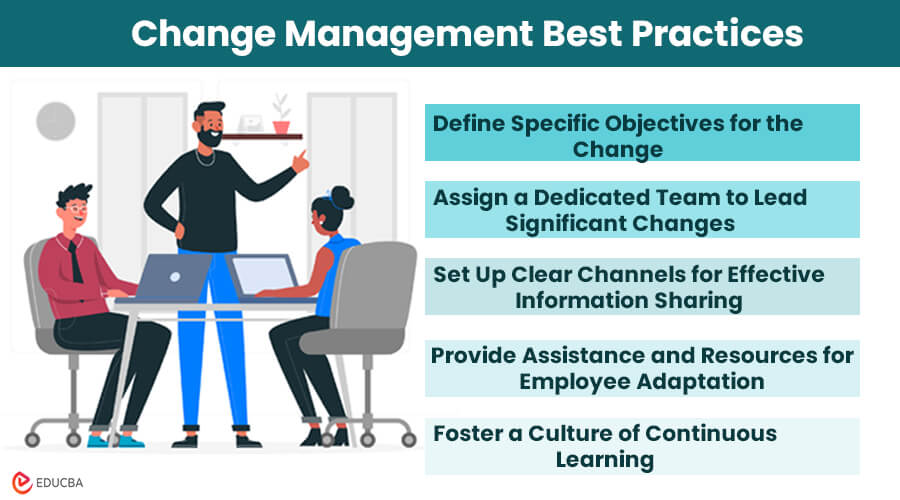
Introduction to Change Management
Imagine you own a grocery store. But recently, you noticed that your customers prefer shopping from online grocery websites rather than visiting your store. In order to keep up with this trend, you decide to start selling groceries online. To do this, you create an app that can deliver groceries within your locality and share it with all your existing customers. This shift represents a change management initiative.
However, to successfully sell online, you need a good plan for managing these changes. This plan should support your business strategies and help you use new tools effectively. By following the best practices for change management, you can smoothly integrate an online shopping platform into your business. It will help you keep growing and succeeding in the digital age. This article will show some of the best change management practices for successful implementation.
What is Change Management?
First and foremost, let’s start by answering the obvious question: what is change management?
Change management is a collective term that explains all the processes, practices, and strategies that organizations employ to plan and implement change within their structures.
Change management guides an organization from the inside to make its plans happen one step at a time.
Change Management Best Practices
Making sure you have a strong plan for handling changes is crucial for successfully transforming how your organization uses digital tools. By following these practices, you can make your organization more flexible and better able to adapt to changes:
1. Define Specific Objectives for the Change
Before making big changes, deciding what you want to achieve is necessary. It involves figuring out the tools or steps you will use and the outcomes you expect in the short, medium, and long term. When setting these goals, define key performance indicators (KPIs) early. These will help you measure how well the changes are working.
2. Assign a Dedicated Team to Lead Significant Changes
When making big changes in a large group, things can get messy, and the changes might not work well because nobody feels responsible. To prevent this, leaders should choose a specific group of people to handle the changes. It will make it more likely that the changes will work because there will be a consistent effort, and if any unexpected problems arise, the team can respond quickly.
3. Set Up Clear Channels for Effective Information Sharing
When a company wants to make big changes, a common problem is that employees often resist these changes. It usually happens because they don’t fully understand what is happening or why the changes are necessary. To tackle this issue, it is important to focus on communication immediately.
Make sure there are clear ways for employees to talk to management. This way, they can easily reach out if they have questions or concerns about the changes. It helps reduce resistance and ensures everyone is on the same page, making the changes more likely to succeed.
4. Provide Assistance and Resources for Employee Adaptation
It is important for employees to feel heard and supported when big changes are happening at work. If your company is making significant changes, having helpful resources available for employees is a good idea. These could be articles, guides, tutorial videos, and more.
Another helpful tool is a digital adoption platform (DAP). It can provide all-important software onboarding support. This tool can provide support when employees are learning to use new software. It works alongside other software tools and gives real-time guidance, making it easier for employees to become skilled with the new tools. Using digital learning like this can keep employees interested and make change initiatives more successful.
5. Foster a Culture of Continuous Learning
It is important to regularly check if the changes a company makes match the goals and measures set in the planning stage. Regular assessments based on these criteria allow businesses to see how well the changes work. This information helps managers determine what is working and what needs improvement to make the company changes more successful and get better results.
Example: Suppose a company finds that its new chatbot is not responding quickly enough to inquiries or not providing relevant information to customers.
To improve its performance, the company can change the chatbot’s scripts or invest in additional training for the chatbot. They may also consider adding more advanced AI capabilities to the chatbot to handle more complex inquiries.
Final Thoughts
Companies must handle changes well in the modern era, especially when using new technologies. Many companies use various tools and methods to achieve their goals, and how they introduce and manage these technologies is crucial for their success. Even though adapting to digital changes can be tough, organizations can overcome challenges by following the right methods and using data to guide their approach to change.
Recommended Articles
We hope this article on “Change Management” was helpful to you. You can also refer to the articles below to learn more.


